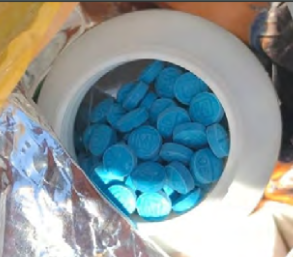Fentanyl’s Relentless March
/By Roger Chriss, PNN Columnist
There is simply no good news where illicit fentanyl is concerned. A DEA report last week called fentanyl the “primary driver” of the opioid crisis, with fentanyl widely available as a street drug in the Midwest, Great Lakes, Northeast and Southwestern states.
The much-feared possibility that the fentanyl crisis is spreading to other parts of the country is proving accurate, and efforts to intervene are not going well.
According to the San Francisco Chronicle,, the number of fatal heroin and fentanyl overdoses more than doubled in the city from 90 in 2018 to 234 last year. UCLA drug researcher Dan Ciccarone, PhD, told the Chronicle that “Fentanyl’s not going away. We have to learn to adapt to it.”
A January bust in Arizona supports this claim. PNN reported that nearly 170,000 counterfeit oxycodone pills made with fentanyl were seized in Phoenix by the DEA and local police.
Similar trends are seen in Washington state, where preliminary reports by law enforcement for 2019 show “notable increases” in illicit fentanyl seizures. A December 2019 raid in North Seattle netted 2,700 counterfeit pills and a manual pill press.
Nationally, fentanyl has been a worsening trend for years. The CDC’s Provisional Drug Overdose Death Count shows a steady increase in fentanyl and other synthetic opioid overdoses through June 2019.
COUNTERFEIT OXYCODONE
By comparison, overdose fatalities for natural and semi-synthetic opioids, which includes oxycodone and hydrocodone, are trending downward.
The federal government is struggling to find an effective response. Reuters reports on a newly proposed measure that would allow the DEA to permanently place all fentanyl analogues into the same legal category as heroin and cocaine, making it easier to prosecute drug dealers trafficking new chemical versions of fentanyl.
But as Reuters notes, the DEA found only two new types of fentanyl analogues in 2019, and saw a significant drop in mail seizures of the drug from 2017 to 2018. In other words, fentanyl trafficking is evolving faster than law enforcement and regulatory responses can keep up. The drugs are being smuggled into country, assembled locally and distributed clandestinely -- all outside the scope of conventional interdiction techniques and supply-side interventions.
This underscores the value of a more comprehensive approach to the opioid crisis described by National Institute on Drug Abuse director Nora Volkow, MD, who recently visited a needle exchange program in Philadelphia.
“Our visit to Philadelphia drove home for me why we need to address the stigma that still surrounds opioid addiction and its treatment. It also drove home why addressing the crisis will require a comprehensive approach — including treatment with medications along with harm-reduction (like needle exchange), as well as case management and an array of nonmedical services that can attend to people’s basic needs, including helping them build meaningful social relationships,” Volkow wrote in her blog.
The U.S. has seen great success in reducing cancer deaths. A combination of public health prevention, screening and monitoring of at-risk populations, research into new treatments, and clinical care have brought down cancer death rates every year since the early 1990s.
Near real-time monitoring of disease is not impossible. In a matter of days, researchers at Johns Hopkins University created a global report on the coronavirus that is updated daily. A similar tool for the overdose crisis would be invaluable.
Illicit fentanyl is rapidly penetrating drug markets as a drug of abuse and as an adulterant in heroin and counterfeit medications. Coupled with a resurgence in cocaine and methamphetamine, the overdose crisis is rapidly becoming a syndemic that is spreading nationwide. Only a comprehensive approach will lead to a sufficient response.
Roger Chriss lives with Ehlers Danlos syndrome and is a member of the Ehlers-Danlos Society. Roger is a technical consultant in Washington state, where he specializes in mathematics and research.




